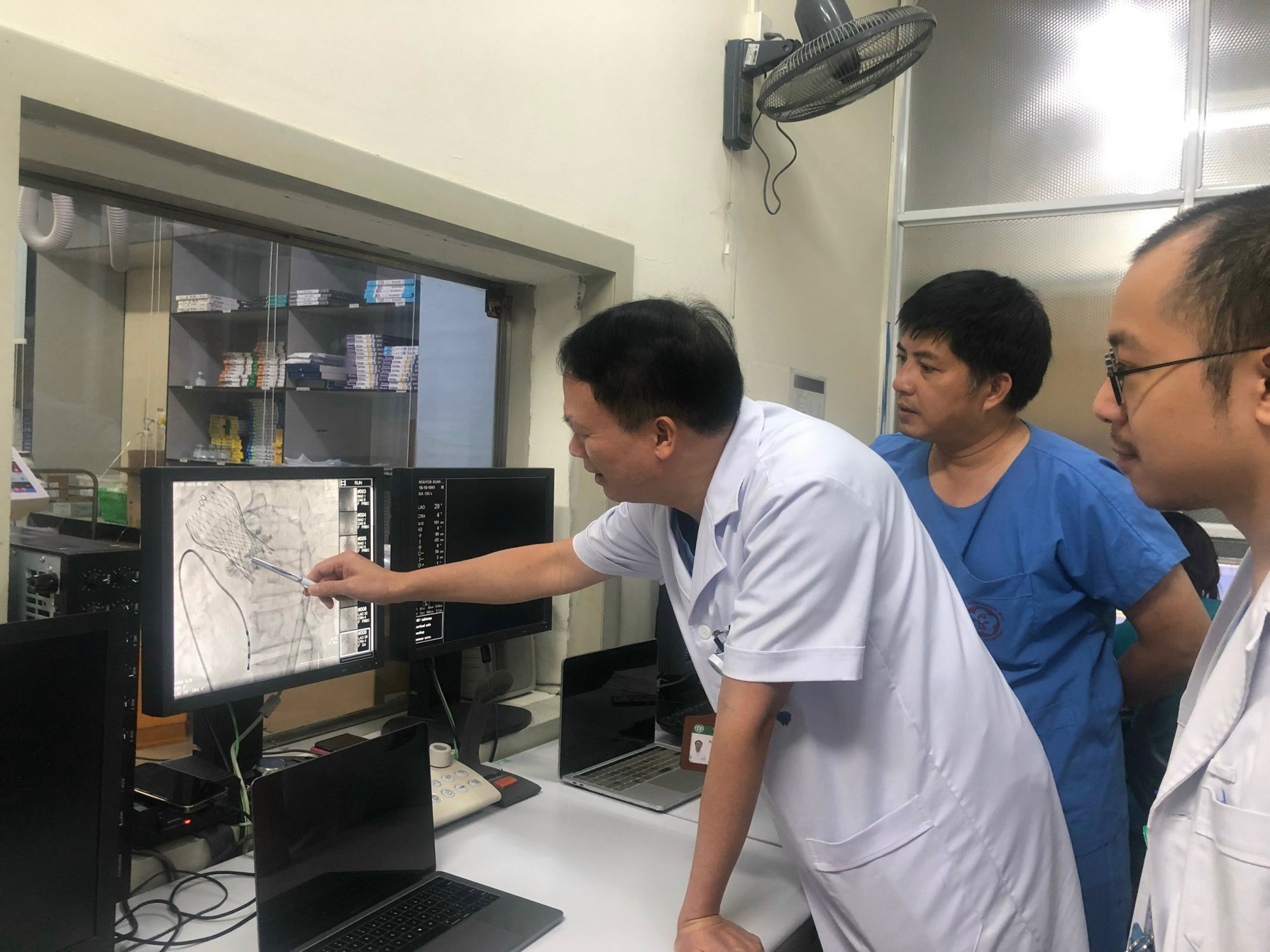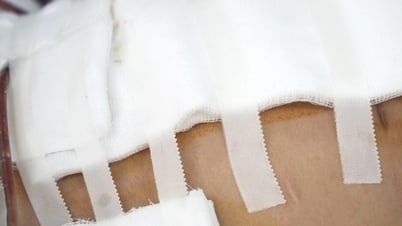In the body, the aortic valve (heart valve) has 3 leaflets that help open and close, ensuring that blood flows in one direction rhythmically. When the valve is narrowed or leaky, it affects circulatory function, heart function and leads to rapid heart failure.
The above patient had undergone transcatheter aortic valve replacement in 2014 due to severe aortic valve stenosis on the basis of degenerative bicuspid aortic valve disease. During this hospitalization, the doctors determined that re-valve replacement was mandatory. The patient's condition did not allow open heart surgery, so re-valve replacement via the valve-in-valve catheter was the optimal indication.

Vietnamese cardiologists successfully performed aortic valve replacement. This is the first time this technique has been performed in the country.
To perform this difficult case, interventional cardiologists, anesthesiologists, resuscitators, echocardiographers, surgeons, etc. agreed on a plan, procedure and performed the procedure.
An 82-year-old patient underwent valve replacement via catheter on the morning of October 18. Doctors at the Vietnam Heart Institute used the balloon-based valve that was placed in the self-expanding valve last time. The Institute's surgical team successfully performed the procedure within 30 minutes from the femoral puncture to bring the catheter to the heart valve that needed replacement. During the procedure, the patient only needed to be put to sleep and woke up immediately after the procedure. Hemodynamic parameters were significantly improved after the procedure.
This is the first valve-in-valve replacement in Vietnam, one of the most advanced techniques in cardiovascular intervention, treating heart valve disease.
Transcatheter aortic valve replacement is a superior treatment for elderly patients with aortic valve stenosis. This technique has many outstanding advantages, no open heart surgery, no anesthesia, quick recovery...
According to the Vietnam Heart Institute, aortic valve degeneration is increasingly common with increasing age and increased cardiovascular risk factors. In developed countries, it is estimated that about 1-3% of people over 75 years old have aortic valve disease of varying degrees. Previously, severe heart valve disease required open heart surgery to replace and repair the valve. However, in severe cases and in advanced age, the risks during surgery are very high and in many cases surgery is not possible.
Source link







![[Photo] Prime Minister Pham Minh Chinh and Prime Minister of the Kingdom of Thailand Paetongtarn Shinawatra attend the Vietnam-Thailand Business Forum 2025](https://vphoto.vietnam.vn/thumb/1200x675/vietnam/resource/IMAGE/2025/5/16/1cdfce54d25c48a68ae6fb9204f2171a)


























![[Photo] President Luong Cuong receives Prime Minister of the Kingdom of Thailand Paetongtarn Shinawatra](https://vphoto.vietnam.vn/thumb/1200x675/vietnam/resource/IMAGE/2025/5/16/52c73b27198a4e12bd6a903d1c218846)




























































Comment (0)